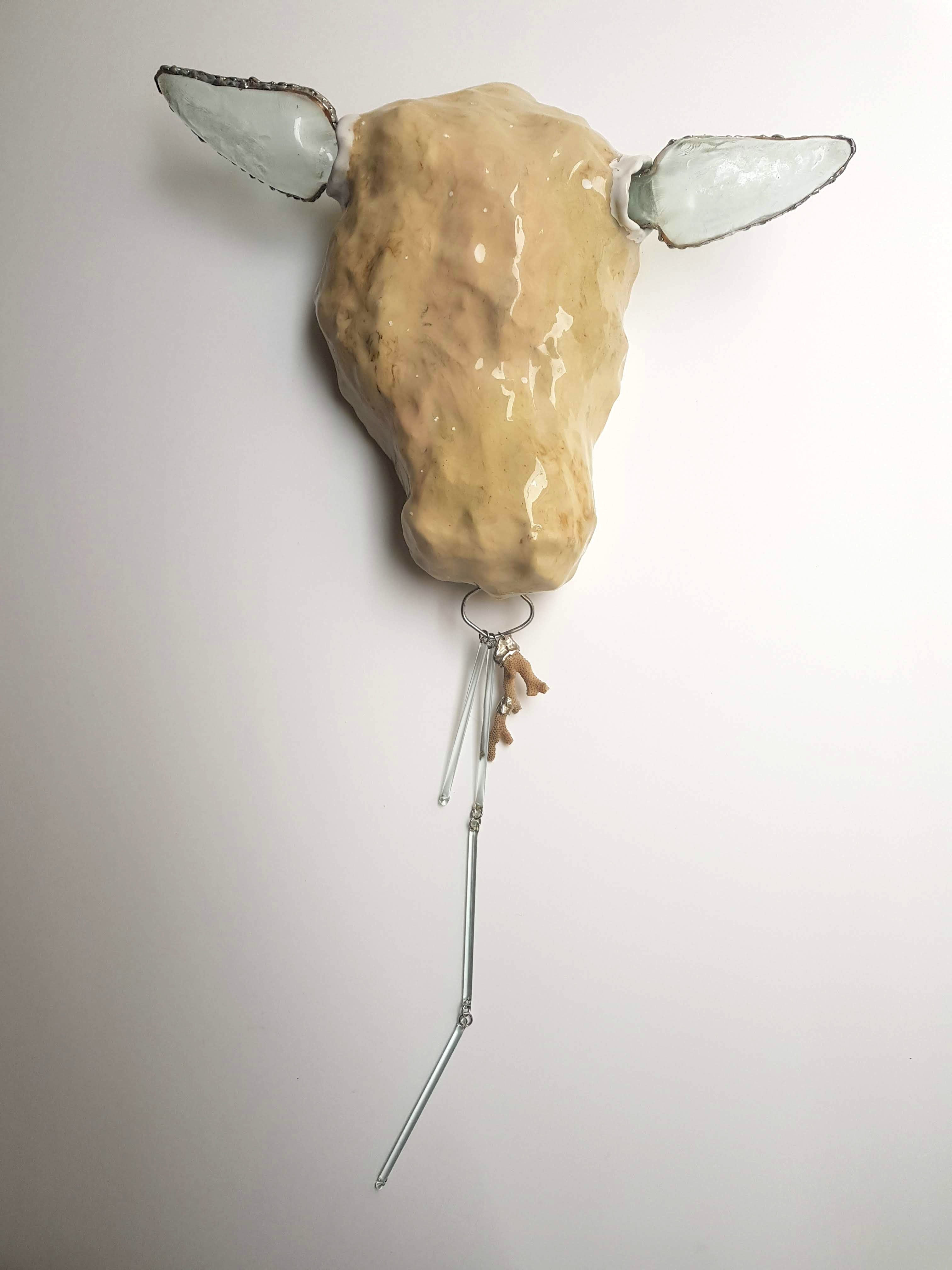

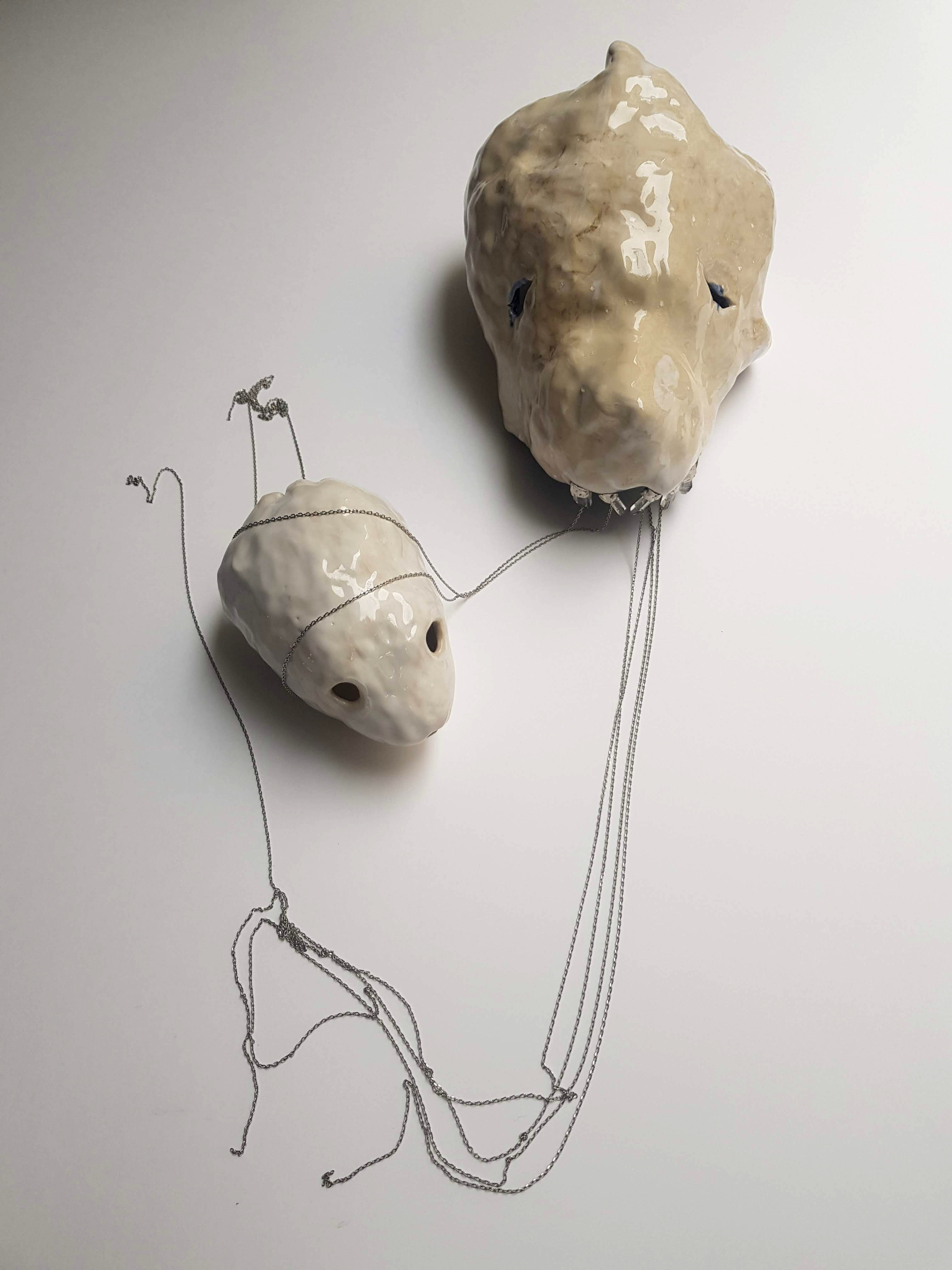
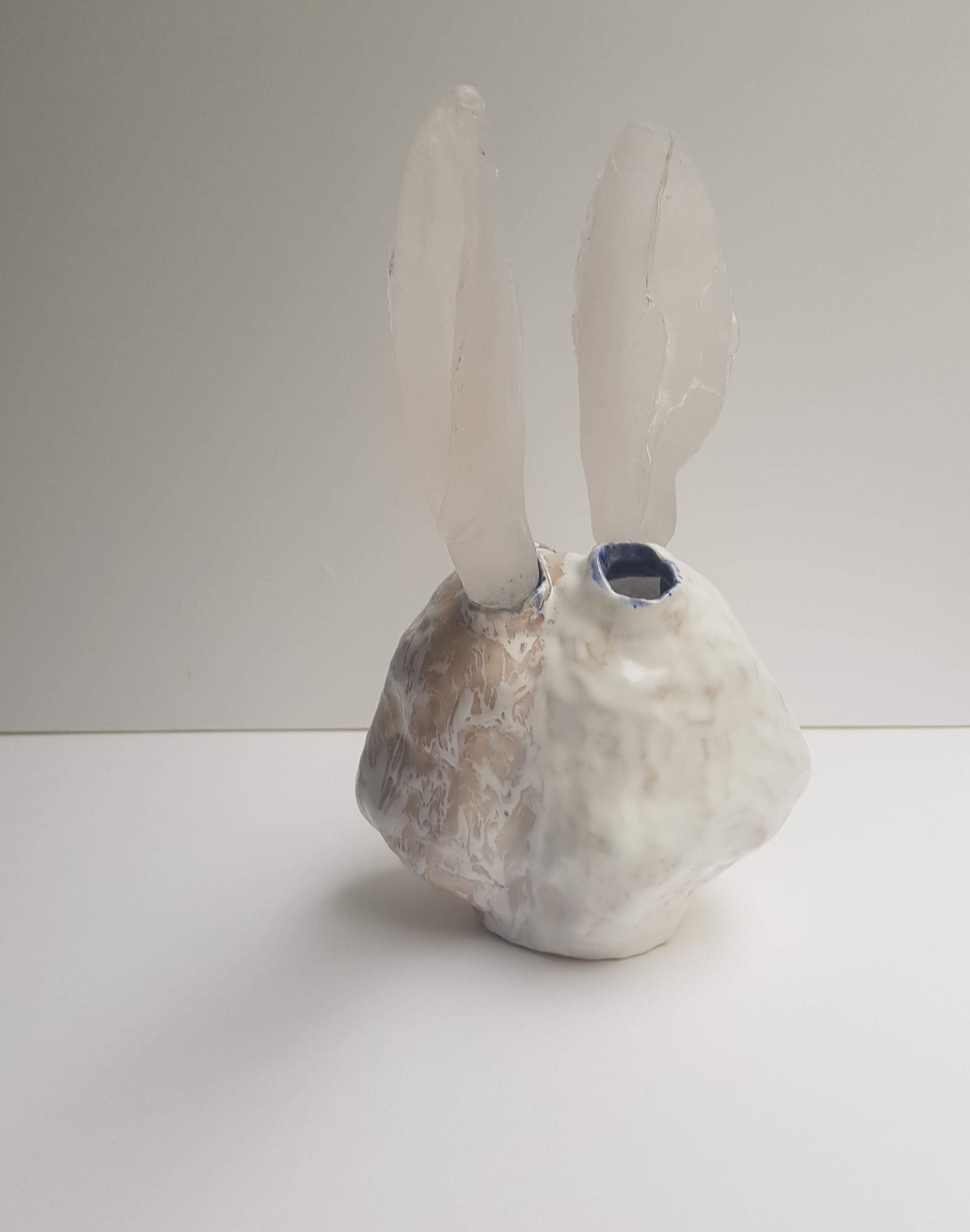

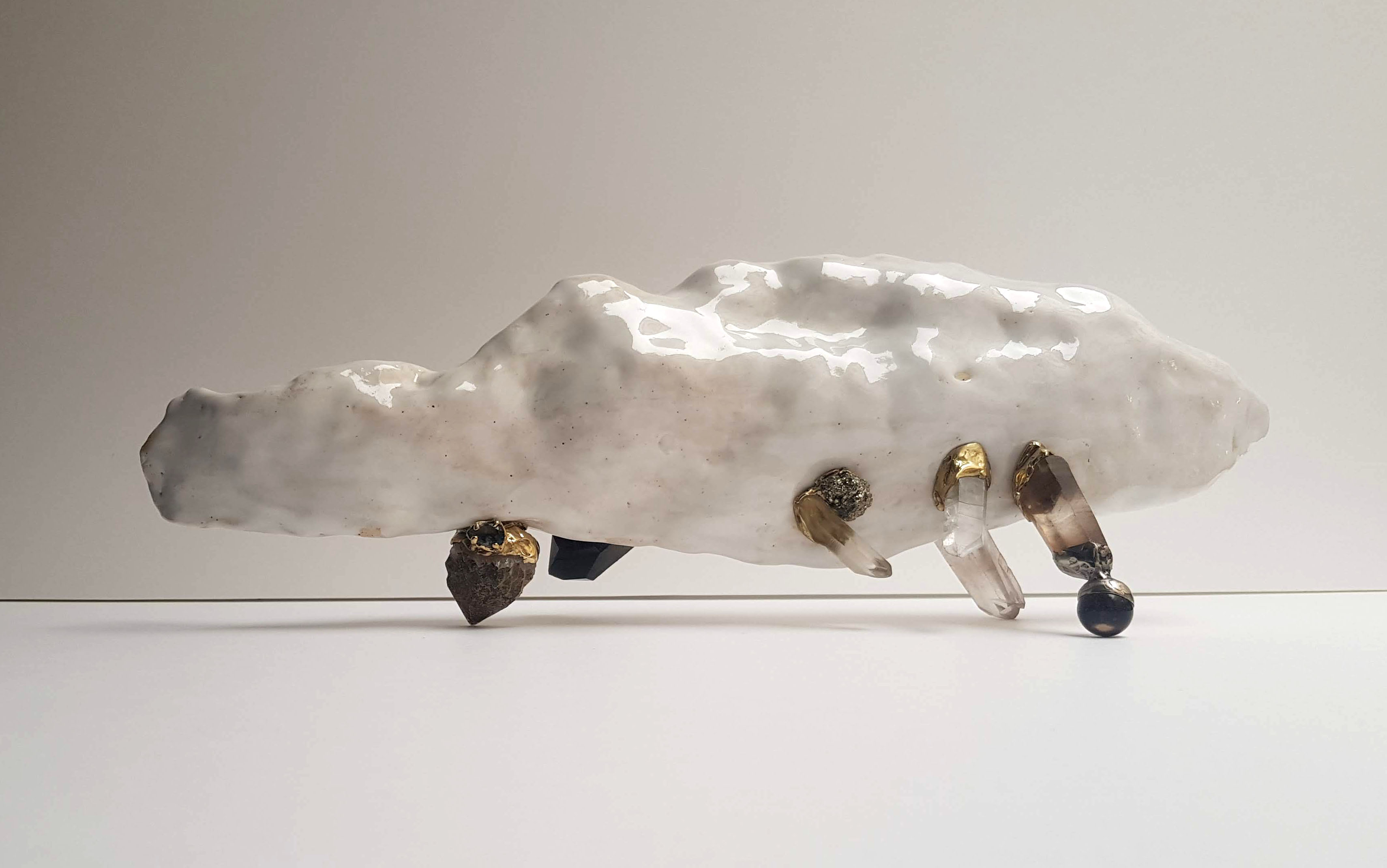

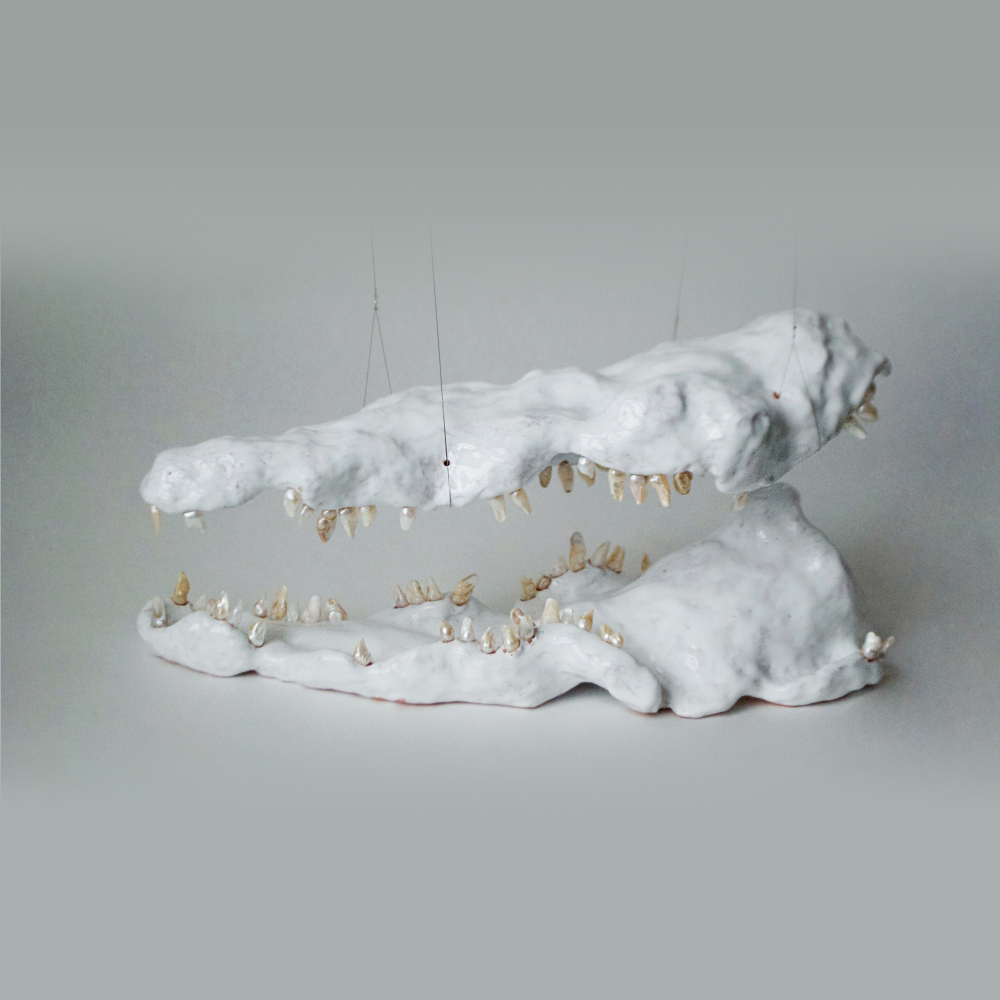
ANALPHA-BETES
Contemporary Art & Medieval Fake News
Liza Fetissova Gallery & Agency (ex-Russiantearoom Gallery) presents Anna Pavlova and her exhibition ANALPHA—BETES for the first time in France, in partnership with the gallery Transatlantique: 31 rue de Verneuil, Paris 7ème - OPENING : December 12 ; EXHIBITION : December 13, 2019 – January 31, 2020.
An animal mask: ears, paws, whiskers, fur … these are pieces that speak to everyone and usually do not need any explanation. Although Anna Pavlova’s masks made of ceramic, silver, and gemstones give off quite a peculiar vibe.
Certainly, you can apprehend them with no comments, exclusively by guessing the original species. They can be seen the way our ancestors designed them when the hand of the creator put them into approximate shapes and the main idea was that of the soul and personification of some major powerful forces. Just like the mask of rhinoceros by Anna Pavlova, with its prominent horn and massive sparkling gemstones, the marks of its strength and authority. And yes, we can envision that these masks have originated from the imagination of a Russian artist, inspired by the nature and the approaches of ancient craftsmen.
Yet the story of these masks is much more complex. Anna Pavlova’s ceramic artwork invites us to take an exciting journey in time that will bring us back to our present actual selves. The artist is fascinated by the long-past times of her ancestors, early Slavs. In order to share their knowledge and overcome their fears, they created a special alphabet: each letter stands for the first letter of a name of an animal that represents it, described in a way that could be defined as whimsical:
“In front of the other animals, the hare is clean and fearful. It is said that the hare can be male for one month and female for another, this is why hares are so prolific when breeding.” Or also: “The crocodile has the following feature: it takes a mouthful of water and then spills it on the pathway where animals walk, and when they slip and fall, the crocodile runs at them and eats them before they get up.”
These are statements of humans observing the nature around them, or of those who learned information from external sources without ever having seen any exotic species.
For them, these definitions were just and true, not fictional or false … or could it still be a manipulation? Anna Pavlova gives material shape to the wildlife portraits. This unique artistic interpretation could have ended there, but instead, Anna’s statement goes deeper.
How different are we compared to our ancestors? Driven by a faster pace of life and globalization, being offered easy access to the remotest corners of our planet, to a so-called free flow of information—are we indeed better informed, more alert, more curious, happier? In the past, mankind was overwhelmed with the greatness of the world, with its extent, its unexplored treasures. Today, man feels tiny in the face of the avalanche of data and immense potentialities.
To get that amount of knowledge in order, people must sort through, systematize, look for reliable sources because much of the available information is false or incorrect. How one can find the truth? Ultimately, there is a return to the starting point, to our forebears: we remain vulnerable to the difficulty of getting the right information. And this is the case with Anna Pavlova: the phenomenon of the discrepancy between our alleged knowledge and the reality is incarnated in a metaphorical form of an animal mask. The latter becomes symbolic of fake news in a nearly virtual world where we are ANALPHABETICS used to assess the level of our education according to our capacity to search and find the right information. The « bêtes pas si bêtes », after all…
These « bêtes pas si bêtes », are inviting you to visit their social media party on the occasion of ANALPHA-BETES exhibition, from December 13, 2019 to Janquary 31, 2020.
31 rue de Verneuil, Paris 75007. Hours: Tuesday-Saturday, 2-7 pm
Texte by: Liza Fetissova
